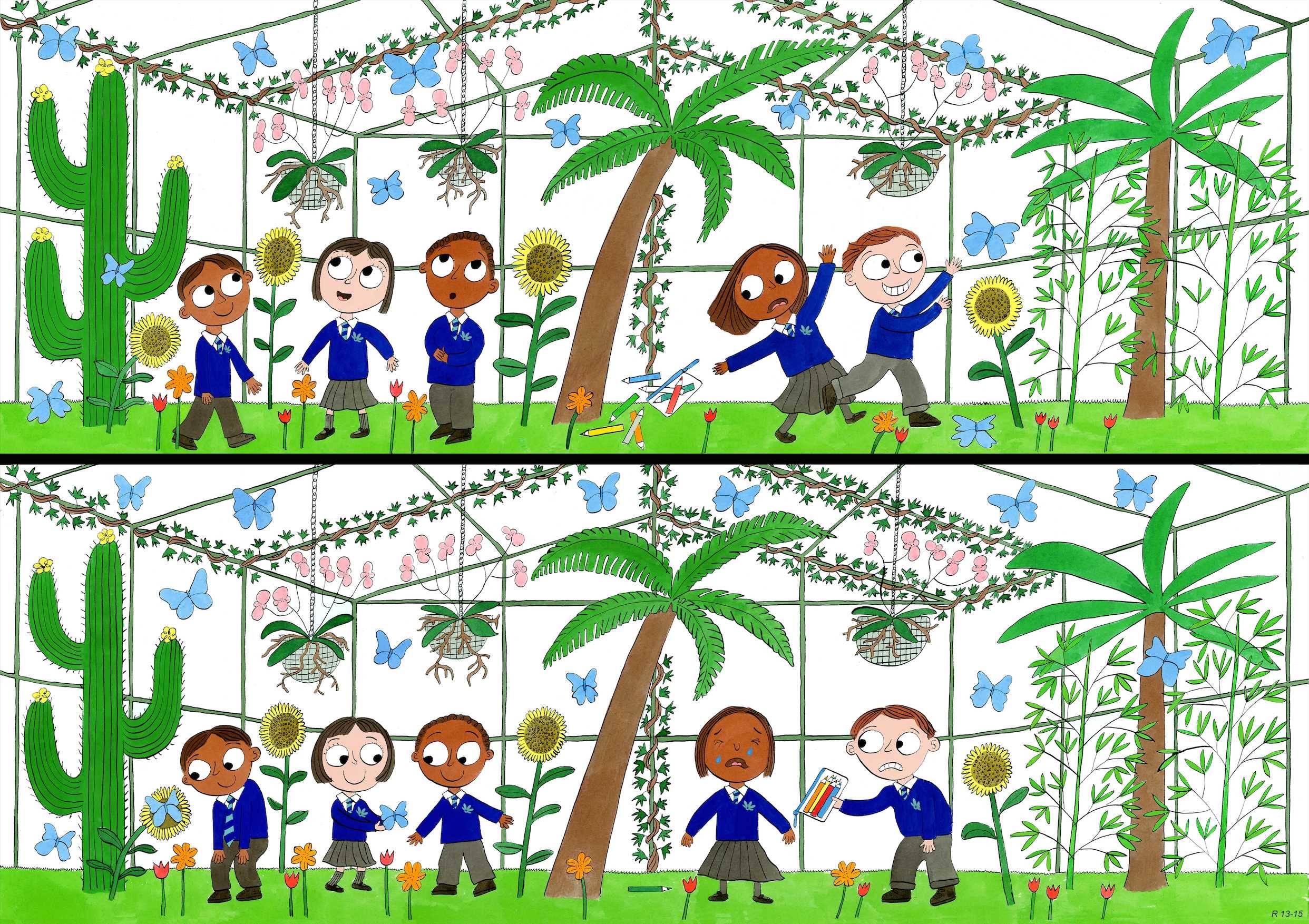Appreciation and Awe
Reception: When I stop and am still, I can see beautiful things around me.
Core Story
Dora’s Eggs by Jane Chapman is about a hen who has a nest of lovely eggs. She wants her farmyard friends to come and admire them, but they’re all busy caring for their own offspring. Dora becomes envious of the fluffy ducklings, the wriggly piglets, the frolicking lambs etc. until her eggs hatch into lovely chicks and she likes them the most.

Drawing out the virtue
Does Dora appreciate her eggs?
Introduce the word envy. Why is Dora envious of the other animals?
Was she right to be envious or should she have appreciated what she had all along?
Activity 1: Mindful walking and appreciating nature
Tell your class that today they’re going to try and think of something outside that they could appreciate but haven’t before.
Practice walking meditation: walking slowly and quietly, concentrating on our steps and our breathing. Before you begin this exercise, you may like to explain to your class why this is a quiet independent task - because it’s about what happens in your own mind and how you appreciate things. Even if the person next to you is your best friend, you cannot know what their mind might think when no-one is distracting. So be thoughtful and kind to your friends, and show your dignity by not touching or talking.
Once in the playground, sit in a circle on the floor keeping still. Ask your pupils to concentrate on one thing they find amazing or beautiful. We can make some suggestions, if necessary, telling them to pay attention to a tiny patch of grass, the colour of the sky or the shape of the clouds, the cool breeze, the song of a bird, the sound of tree leaves swaying in the wind, the pattern of the brick, the smell of the grass, the warm sun on our skin... Allow the children to spend a few minutes just watching in silence.
Afterwards, simply get up quietly and go back to the classroom, walking in silence and concentration, enjoying the walking meditation.
Once in class, ask pupils to share in a sentence what they found amazing and why?
During choosing time they could also write a sentence about the thing they found amazing or beautiful, and present it alongside a drawing.
You could even then turn these into a book called the “Book of the little amazing and beautiful things.” The children can take this book home in turns to show their families what they are grateful for in the world around them. Later on, keep it in class for future reference and as a nice memory of this activity.
Another option is to give children magnifying glasses. This can work well inside or outside. Tell pupils to look carefully at things that are so small they don’t normally notice them, for example the stitching on their jumpers or the pattern on their own fingertips.
Activity 2: Classical music
Play the children some classical music and encourage them to appreciate the sounds of the different instruments. Encourage children to just sit and listen and appreciate the music. Listening to the music for a second time, help the children to appreciate the music by asking:
How does this music make you feel?
What instruments can you hear?
Who made the instruments? How do you think they were made?
How do musicians learn to play like this?
Suggestions:
Serge Prokofiev, Peter and the Wolf
Tchaikovsky, The Nutcracker Suite
|
Classroom language
|
|
I like the way X is showing his appreciation of …
Remember to stop and appreciate things.
|

Library books
Augustus and His Smile by Catherine Rayner
Wow! Said the Owl – by Tim Hopgood – Nursery
Leah’s Christmas Story by Margaret Bateson-Hill
Dear Greenpeace, There’s a Whale in Emily’s Pond by Simon James
The Big Big Sea by Martin Waddell
When I Was Born by Isabel Minhos Martins and Madalena Matoso
Listen Listen by Phillis Gershator
Rainforest Romp by Tony Mitton and Ant Parker